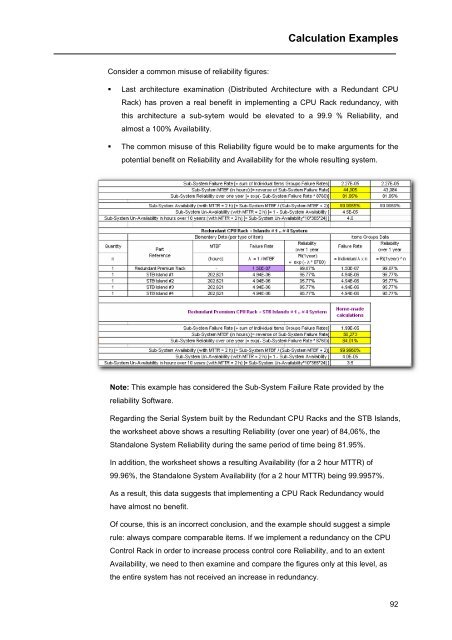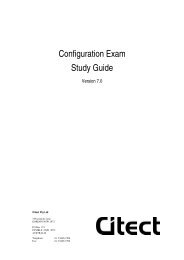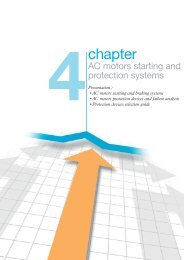High Availability Theoretical Basics - Schneider Electric
High Availability Theoretical Basics - Schneider Electric
High Availability Theoretical Basics - Schneider Electric
Create successful ePaper yourself
Turn your PDF publications into a flip-book with our unique Google optimized e-Paper software.
Consider a common misuse of reliability figures:<br />
Calculation Examples<br />
� Last architecture examination (Distributed Architecture with a Redundant CPU<br />
Rack) has proven a real benefit in implementing a CPU Rack redundancy, with<br />
this architecture a sub-sytem would be elevated to a 99.9 % Reliability, and<br />
almost a 100% <strong>Availability</strong>.<br />
� The common misuse of this Reliability figure would be to make arguments for the<br />
potential benefit on Reliability and <strong>Availability</strong> for the whole resulting system.<br />
Note: This example has considered the Sub-System Failure Rate provided by the<br />
reliability Software.<br />
Regarding the Serial System built by the Redundant CPU Racks and the STB Islands,<br />
the worksheet above shows a resulting Reliability (over one year) of 84,06%, the<br />
Standalone System Reliability during the same period of time being 81.95%.<br />
In addition, the worksheet shows a resulting <strong>Availability</strong> (for a 2 hour MTTR) of<br />
99.96%, the Standalone System <strong>Availability</strong> (for a 2 hour MTTR) being 99.9957%.<br />
As a result, this data suggests that implementing a CPU Rack Redundancy would<br />
have almost no benefit.<br />
Of course, this is an incorrect conclusion, and the example should suggest a simple<br />
rule: always compare comparable items. If we implement a redundancy on the CPU<br />
Control Rack in order to increase process control core Reliability, and to an extent<br />
<strong>Availability</strong>, we need to then examine and compare the figures only at this level, as<br />
the entire system has not received an increase in redundancy.<br />
92

















